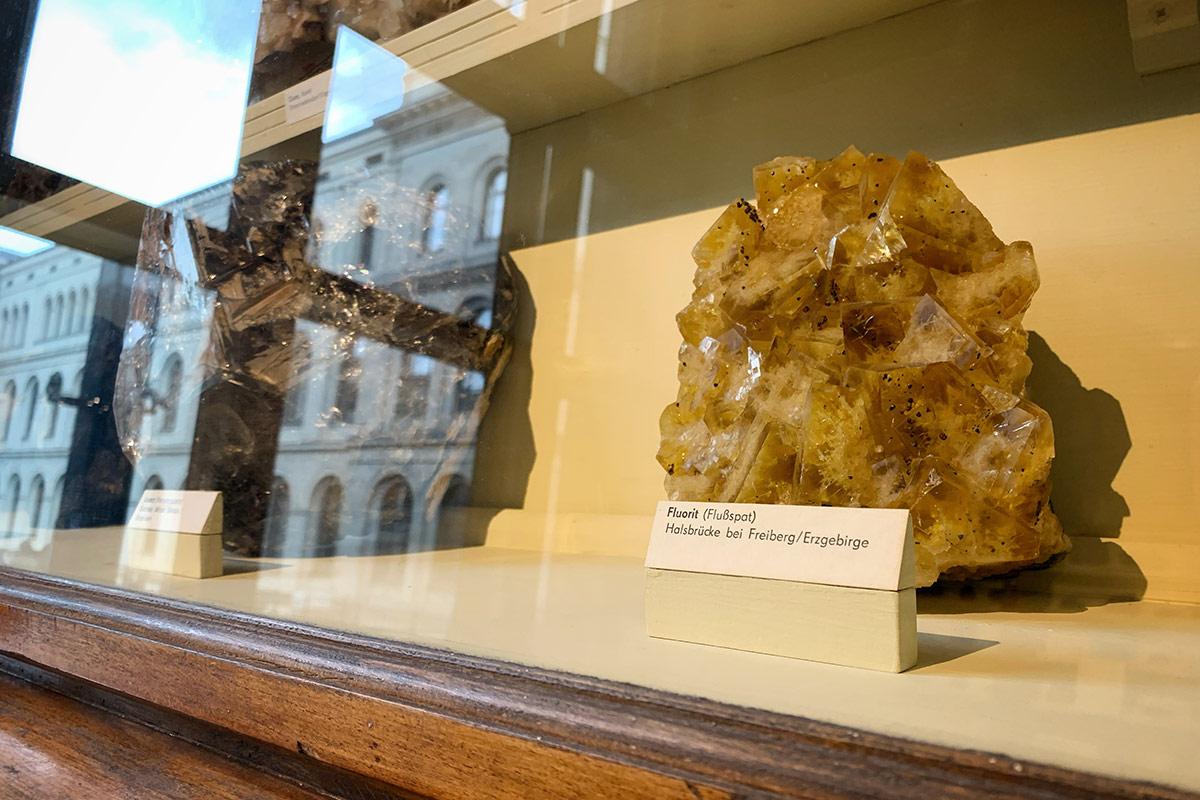As a research infrastructure, the collection of the Museum für Naturkunde Berlin comprises about 30 million objects from the time of the formation of the solar system more than 4.5 billion years ago until today. The collection of minerals alone comprises about 180,000 samples and contains about 3,000 types of minerals, which corresponds to about 60% of all known minerals. Among them are also numerous fluorites (calcium fluoride) of various origins. More about the collection here.
Fluorite has been one of the most important industrial raw materials for over 100 years. It is used in the production of steel and light metals as a flux in metal melting, for the extraction of fluorine as a starting material for organic compounds and for the production of hydrofluoric acid. Fluorides are added to table salt and also to toothpaste.
Fluorite occurs worldwide. An important deposit is located in the Erzgebirge / Saxony. In the Freiberg mining district near Halsbrücke, large quantities of lead and silver ores were mined in the 18th and 19th centuries. The polymetallic vein deposit contains considerable amounts of fluorite, which crystallized out during the cooling of hot solutions in the rock fissures. The ores and thus also the fluorite were mined in mines at depths of more than 500 metres and were very dangerous at that time. The yellow fluorite stage shown here is an example from this deposit. Fluorite can take on different colours, violet, green or brownish, which is due to admixtures of other elements such as iron and manganese. Typical are cubic crystals, because fluorite crystallizes in the cubic crystal system.
